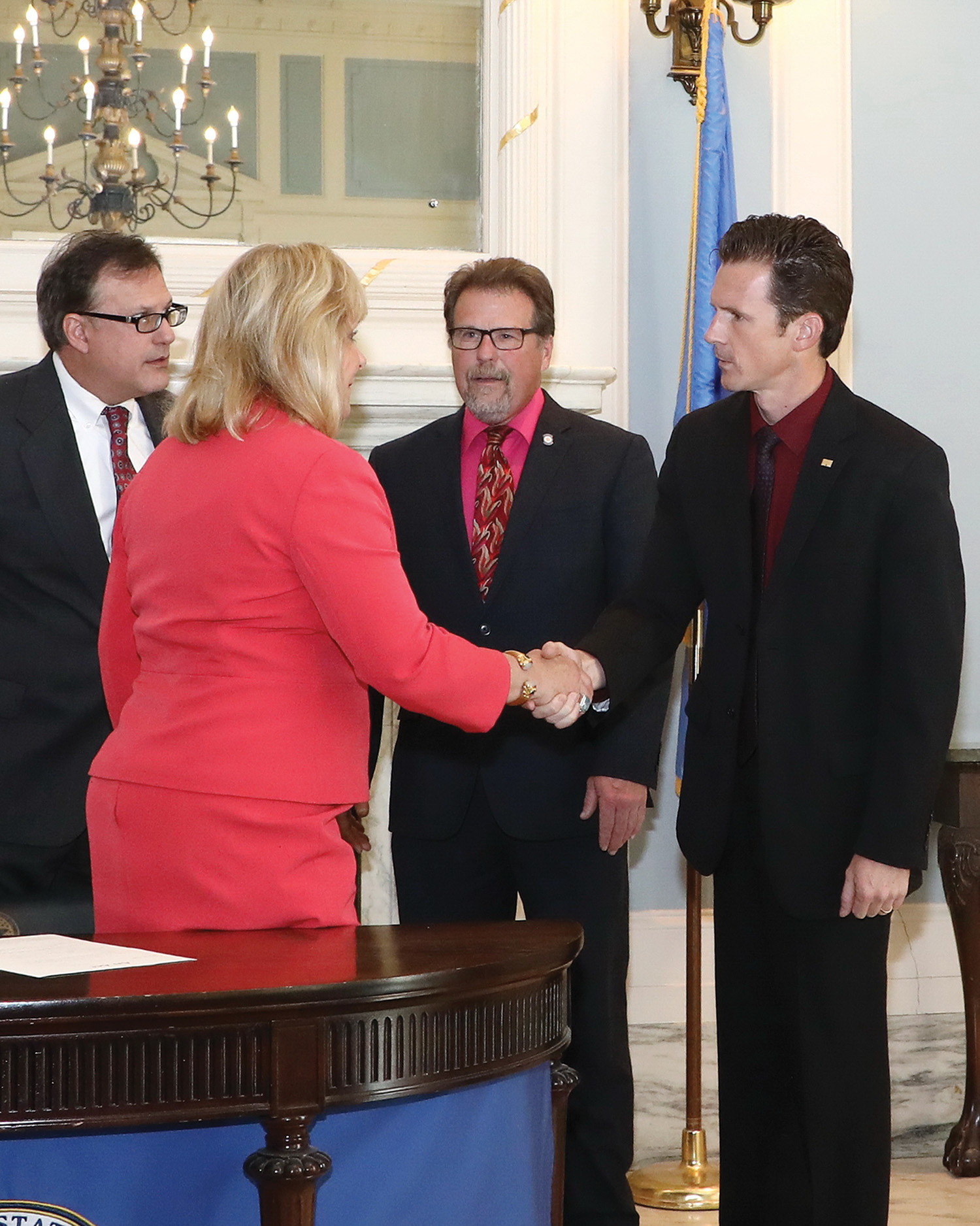One of the many types of cargo shipped through the Tulsa Port of Catoosa (Okla.) project cargo. Project cargo is the phrase used to characterize transportation of large, heavy, over-sized, high-value or critical pieces of equipment. These types of products are manufactured by many companies in Northeast Oklahoma and the surrounding states. More than 17,000 tons of project cargo have moved through the Tulsa Port in the past three years.
At times, moving this type of cargo can be challenging. That is why the Tulsa Port staff worked closely with state transportation agencies, elected officials and private industries, such as manufacturers and heavy haul companies, to identify some of the concerns and obstacles with these types of moves. The goal was to find manageable solutions that would be beneficial to all parties.
In November, amendments to two existing Oklahoma laws will lower the costs of this type of transportation by increasing the allowable permit weight limit from 20,000 pounds per axle to 23,000 pounds per axle. The port said that thanks to the leadership and persistence of Tulsa Port of Catoosa Manager of Operations Brad Banks, these changes will bring Oklahoma standards for oversize loads to the same level as almost all other states in the country—and all of Oklahoma’s neighboring states.
Senate Bill 1114 and Senate Bill 1089 were authored by Sen. Michael Bergstrom and Rep. Terry O’Donnell. Both elected officials along with Banks were present at the signing ceremony when Gov. Mary Fallin signed the bills into law. The amendments will establish designated primary routes for oversize loads to travel across the state without burdening local infrastructure and without complex detours.
“This is great news for the manufacturing transportation industry in Oklahoma,” said Banks. “This is part of the state’s long-term strategic freight plan, which aims to make our transportation network more efficient and better prepared.
“These changes will decrease the impact of the movement of oversize loads to the rest of the traveling public. In addition, there are no upfront costs to this proposal and no immediate reconstruction needed. This is about preserving routes and smart planning, not immediate infrastructure improvement.”
The new amendments will also bring other benefits to Oklahoma. Namely, the changes will spur job creation as more quality manufacturing companies will now be interested in shipping through Oklahoma.
“These efforts lower the cost of transportation, which means Oklahoma companies have less overhead and can bid for large contracts, which will create more jobs with better pay,” he said.
A common concern, said the port, is that allowing larger loads to travel through Oklahoma will hurt the roads. Banks said that the impact from the updated laws to Oklahoma roads and bridges are so insignificant as to be considered negligible.
A 2017 analysis from Oklahoma engineering firm, Cross and Associates, reported these oversize/overweight trucks make up less than 1 percent of all heavy truck traffic, even on primary freight routes. Additionally, all new bridges built in Oklahoma—and across the country—are designed to routinely carry tandem axle loads higher than the 46,000 pounds being proposed.
“Most importantly, this does not mean all semi-trucks can or will be loaded heavier,” Banks said. “A permit and route review from Oklahoma Department of Transportation will still be required. This just means we are implementing designated hi-wide corridors to shift traffic away from less resilient highways and onto ones designed to carry them regularly.”
Today, the port said, moving large manufactured items in Oklahoma is more expensive than in neighboring states, which greatly discourages businesses from transporting goods through Oklahoma. Banks said these changes help align Oklahoma’s transportation industry with the rest of the nation and capitalize on the improvements and private investments Oklahoma’s manufacturing transportation industry has made recently.
“These changes will allow shippers to utilize the investment made over the past several years into bringing our ports, roads and bridges up to national standards,” Port Authority Chairman Chip McElroy said. “We built it, and we need to use it. I’m pleased that the Tulsa Port Authority and Banks were able to lead in this effort, and I’m excited to see the changes go into effect so we can better the manufacturing transportation industry in Oklahoma.”




